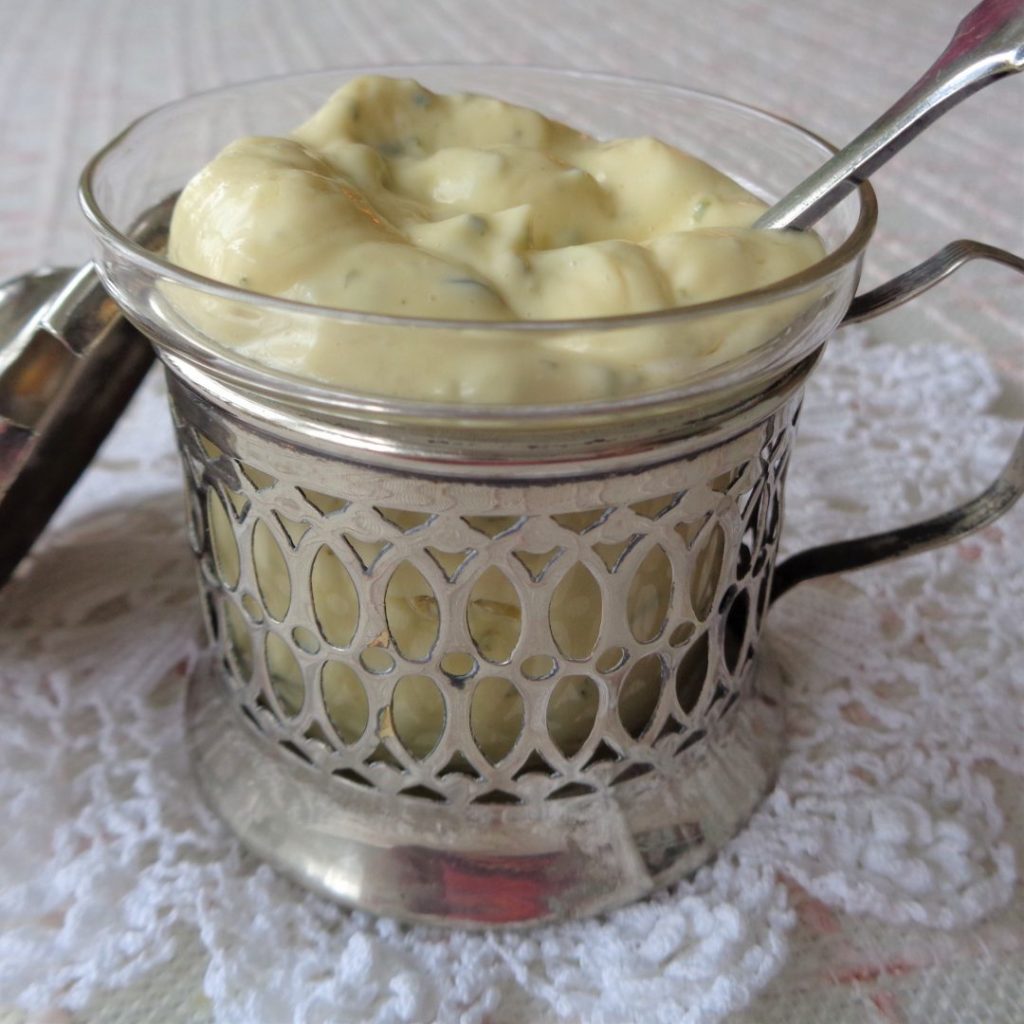Most of us grew up with a family brand of mayonnaise and nothing much tastes better than what we are used to. If Hellman’s, Miracle Whip or something similar are your automatic choices, opening the door to exploring can be a big adventure.
One of the considerations is that fresh made mayonnaise is best kept no longer than a week. Making small amounts makes sense but when the first ingredient is usually 1 egg, the finished quantity will be over a cup. Unless there are potato salad making plans in the coming seven days, possibly too much mayonnaise to consume easily.
The solution? Either stir up an egg and divide in half or use just the egg yolk, adding the white into your next batch of scrambled eggs.
You will need:
1 egg yolk
1 1/2 – 2 tsp. fresh lemon juice
1/2 tsp. dijon mustard
1/2 cup oil (more on that below)
2 – 1/2 Tbsp. fresh herbs
So let’s chat oils. A common choice is olive oil. Full of monounsaturated fatty acids, olive oil adds its own distinctive flavour, sometimes a bit much if you are trying to come close to what you usually purchase. If the intention is to make a flavoured mayonnaise as we are doing here, or you would just like a milder flavour, choosing a lighter oil or combination of oils such as grapeseed, sunflower, avocado or vegetable oil leaves a little more room for the other ingredients to shine. There is no right and wrong answer, just what your health goals are, your magical intentions and what your taste buds tell you hits the spot.
Herbs can be added as a single flavour, such as dill to go with a freshly grilled salmon, or a garden mix of what is on hand. In this case a combination of chive, tarragon, oregano and thyme was used and next time it might be parsley and chives to go over new potatoes or tarragon in an egg salad sandwich or maybe oregano with a touch of garlic for chicken. Mayonnaise can also be the starting point of a salad dressing.
Lemon juice was the acid in this mix but if fresh lemons are not handy but vinegar is, substituting is an option. Again there are lots of choices, white wine, apple cider, champagne, rice and balsamic to name a few. Each will bring their distinctive flavour to the mix.
Having the egg and oil at the same temperature will aid in the emulsifying. Another aid is to add the oil slowly. It does not need to be a drip at a time, especially in a food processor but more oil than the ingredients can handle at one time and the mixture will separate.
The process is very simple. Place the egg yolk, lemon juice, mustard and finely chopped herbs in a food processor that allows additional ingredients to be added. In this case, not a Magic Bullet. Pulse to combine and then while still turned on, pour the oil (I used grapeseed) slowly into the mixing ingredients in a slow steady stream that does not overpower the egg. As the oil is added, the mixture will get thicker.
Once all the oil has been added, transfer the mayonnaise to an airtight storage container. Alton Brown suggests letting the finished product sit at room temperature for several hours so that the acid can kill any bacteria that might be in the egg yolk. Store in the fridge and experiment as spring and summer proceed to give us an abundance of options.




